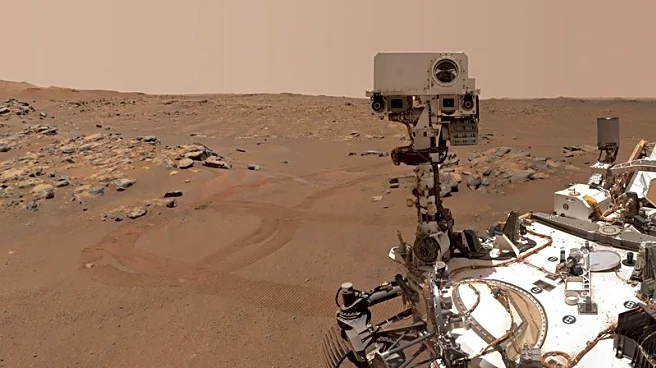What's Happening?
NASA is set to reveal a new discovery made by the Perseverance rover on Mars, focusing on a sample collected from Jezero Crater. The sample, named 'Sapphire Canyon,' was extracted from a rock formation known as 'Cheyava Falls,' which has shown chemical evidence of reactions potentially associated with life. The discovery will be discussed in a live conference, highlighting the significance of the sample and its implications for understanding Mars' history. The Perseverance team has been collecting samples with the aim of returning them to Earth for further analysis, although the Mars Sample Return program faces challenges due to budget constraints and shifting priorities.
Why It's Important?
The discovery of the Sapphire Canyon sample is crucial for understanding Mars' potential to have hosted life. The chemical evidence found in the sample could provide insights into the planet's past environments and the possibility of life beyond Earth. The findings may influence future Mars exploration missions and the development of technologies for sample retrieval. The announcement underscores the importance of continued investment in space exploration to answer fundamental questions about life in the universe.
What's Next?
NASA plans to release a detailed paper on the discovery, and the conference will include visuals to explain the findings. The fate of the Mars Sample Return program remains uncertain, but scientists advocate for Earth-based analysis of the samples to gain deeper insights. The Perseverance rover will continue its mission on Mars, collecting more samples and exploring new areas to expand our understanding of the planet.
Beyond the Headlines
The discovery raises questions about the ethical and scientific implications of searching for life on other planets. It highlights the need for international collaboration in space exploration and the potential for groundbreaking discoveries that could reshape our understanding of life. The event also emphasizes the challenges faced by space agencies in balancing budgets and priorities while pursuing ambitious scientific goals.













